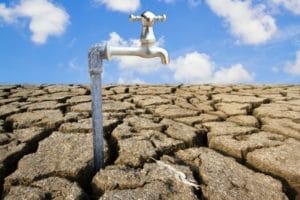New York Times
by Jonathan Foley
Droughts happen. They have happened in the past, and they will happen in the future. Whether the odds of extreme droughts are changing is still an open question, but signs point to shifting patterns of climate.

No matter the cause, droughts have a heavy impact on agriculture. This year, American corn and soybean crops are being crippled by high temperatures and low rainfall. Only a lucky few farmers will have a decent harvest.
Sadly, much of America’s commodity agriculture is especially vulnerable to climatic extremes – whether droughts, floods, heat waves or cold snaps. In particular, it is hard to imagine a system more susceptible to bad weather than the American corn and soybean belt.
Why are these farms so vulnerable to climatic extremes?
First, they are vast monocultures. You can drive from one end of the Midwest to the other and see almost nothing but corn and soybeans. If either crop fails (in terms of production or price), farmers are doomed. (Imagine a mutual fund that only invested in two companies. Wouldn’t that be incredibly risky?) Diversification – from two crops to dozens – would help guarantee at least some production and income each year.
Second, corn and soybeans are annuals with shallow roots, bred for rapid summertime growth. They cannot withstand a bad season. Shifting to other farming systems, with more perennial crops, deep-rooted grasses and trees, could increase resilience to extreme weather.
Third, decades of industrial farming have depleted the natural organic matter (and “tilth”) of many Midwestern soils, reducing their ability to absorb and store moisture. Fortunately, no-till agriculture and organic farming practices can restore the health of the soil, and greatly improve the resilience of crops to extreme weather.
Finally, commodity agriculture suffers many built-in inefficiencies. American corn and soybeans are mainly used to feed animals (where cattle require 30 pounds of grain to add one pound of boneless beef) and produce ethanol rather than feed people directly. A system that replaces some of the corn-soybean belt with grains, fruits and vegetables that go directly into the human diet and with grasslands to feed animals and create cellulosic biofuels would feed more people, and be far more resilient to climatic extremes.
Extreme drought will happen again, guaranteed. Will American agriculture take a cue from this summer and prepare for it?
Jonathan Foley is the director of the Institute on the Environment at the University of the Minnesota, where he holds a McKnight Presidential Chair in global environmental sustainability.

